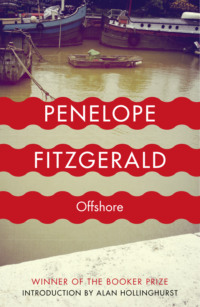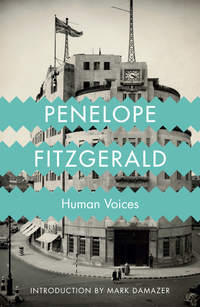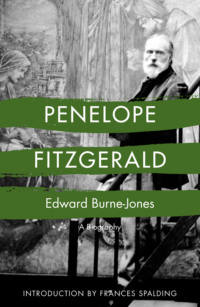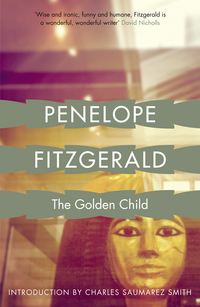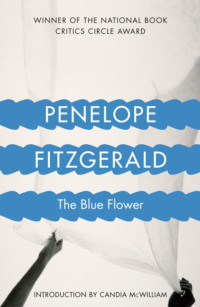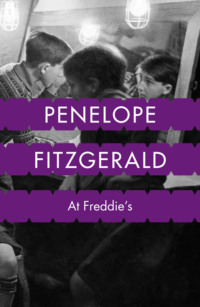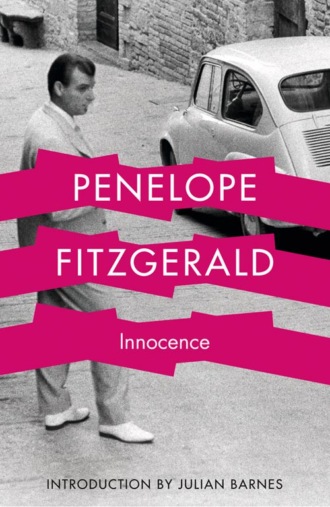
Полная версия
Innocence

Innocence
PENELOPE FITZGERALD

Contents
Cover
Title Page
Preface
Introduction
Part 1
Chapter 1
Chapter 2
Chapter 3
Chapter 4
Chapter 5
Chapter 6
Chapter 7
Chapter 8
Chapter 9
Chapter 10
Chapter 11
Chapter 12
Chapter 13
Chapter 14
Chapter 15
Chapter 16
Chapter 17
Chapter 18
Chapter 19
Chapter 20
Chapter 21
Chapter 22
Chapter 23
Chapter 24
Chapter 25
Chapter 26
Chapter 27
Chapter 28
Chapter 29
Chapter 30
Chapter 31
Chapter 32
Chapter 33
Chapter 34
Chapter 35
Chapter 36
Chapter 37
Chapter 38
Chapter 39
Chapter 40
Chapter 41
Chapter 42
Part 2
Chapter 1
Chapter 2
Chapter 3
Chapter 4
Chapter 5
Chapter 6
Chapter 7
Chapter 8
Chapter 9
Chapter 10
Chapter 11
Chapter 12
Chapter 13
Chapter 14
Chapter 15
Chapter 16
Chapter 17
Chapter 18
Chapter 19
Chapter 20
Chapter 21
Chapter 22
Chapter 23
Chapter 24
Chapter 25
Chapter 26
Chapter 27
Chapter 28
Chapter 29
Chapter 30
Chapter 31
Chapter 32
About the Author
Praise
Also by the Author
Copyright
About the Publisher
Penelope Fitzgerald Preface by Hermione Lee, Advisory Editor
When Penelope Fitzgerald unexpectedly won the Booker Prize with Offshore, in 1979, at the age of sixty-three, she said to her friends: ‘I knew I was an outsider.’ The people she wrote about in her novels and biographies were outsiders, too: misfits, romantic artists, hopeful failures, misunderstood lovers, orphans and oddities. She was drawn to unsettled characters who lived on the edges. She wrote about the vulnerable and the unprivileged, children, women trying to cope on their own, gentle, muddled, unsuccessful men. Her view of the world was that it divided into ‘exterminators’ and ‘exterminatees’. She would say: ‘I am drawn to people who seem to have been born defeated or even profoundly lost.’ She was a humorous writer with a tragic sense of life.
Outsiders in literature were close to her heart, too. She was fond of underrated, idiosyncratic writers with distinctive voices, like the novelist J. L. Carr, or Harold Monro of the Poetry Bookshop, or the remarkable and tragic poet Charlotte Mew. The publisher Virago’s enterprise of bringing neglected women writers back to life appealed to her, and under their imprint she championed the nineteenth-century novelist Margaret Oliphant. She enjoyed eccentrics like Stevie Smith. She liked writers, and people, who stood at an odd angle to the world. The child of an unusual, literary, middle-class English family, she inherited the Evangelical principles of her bishop grandfathers and the qualities of her Knox father and uncles: integrity, austerity, understatement, brilliance and a laconic, wry sense of humour.
She did not expect success, though she knew her own worth. Her writing career was not a usual one. She began publishing late in her life, around sixty, and in twenty years she published nine novels, three biographies and many essays and reviews. She changed publisher four times when she started publishing, before settling with Collins, and she never had an agent to look after her interests, though her publishers mostly became her friends and advocates. She was a dark horse, whose Booker Prize, with her third novel, was a surprise to everyone. But, by the end of her life, she had been shortlisted for it several times, had won a number of other British prizes, was a well-known figure on the literary scene, and became famous, at eighty, with the publication of The Blue Flower and its winning, in the United States, the National Book Critics Circle Award.
Yet she always had a quiet reputation. She was a novelist with a passionate following of careful readers, not a big name. She wrote compact, subtle novels. They are funny, but they are also dark. They are eloquent and clear, but also elusive and indirect. They leave a great deal unsaid. Whether she was drawing on the experiences of her own life – working for the BBC in the Blitz, helping to make a go of a small-town Suffolk bookshop, living on a leaky barge on the Thames in the 1960s, teaching children at a stage-school – or, in her last four great novels, going back in time and sometimes out of England to historical periods which she evoked with astonishing authenticity – she created whole worlds with striking economy. Her books inhabit a small space, but seem, magically, to reach out beyond it.
After her death at eighty-three, in 2000, there might have been a danger of this extraordinary voice fading away into silence and neglect. But she has been kept from oblivion by her executors and her admirers. The posthumous publication of her stories, essays and letters is now being followed by a biography (Penelope Fitzgerald: A Life, by Hermione Lee, Chatto & Windus, 2013), and by these very welcome reissues of her work. The fine writers who have provided introductions to these new editions show what a distinguished following she has. I hope that many new readers will now discover, and fall in love with, the work of one of the most spellbinding English novelists of the twentieth century.
Introduction
Penelope Fitzgerald liked to begin her late novels with quiet acts of indirection. The first sentence of The Blue Flower contains a disrupting double negative; The Beginning of Spring opens with a character leaving the very city where most of the book’s action is going to take place. We are being put on our guard, politely warned not to take things for granted. But neither of these novels begins in as apparently wrong-footing a way as Innocence. Though the novel is to be set in Florence in 1955, its first chapter plants us back in mid-sixteenth-century Italy, at the Villa Ricordanza, inhabited by the Ridolfis, a family of aristocratic midgets. The Ridolfis dote on their young daughter, and so practise many kindly deceptions to convince her that her genetic condition, far from being a handicap, is not even an aberration. She is surrounded only by those the same size as herself, and is never allowed to leave the villa to discover the truths of the outside world. She is also provided with a female companion, Gemma, a dwarf (as opposed to a midget), whom she pities, and then pities the more when a sudden spurt of growth occurs. Poor girl, about to become a giantess, a freak, and to have to face this fact … and so the daughter, who has ‘a compassionate heart’, comes up with a solution for Gemma, as well-meaning in its intent as it is ghoulishly cruel in its actuality.
After these first four pages, we suddenly jump four centuries to the modern world, by which time the descendants of that Ridolfi family have become normal-sized and are nowadays eccentric only in socially acceptable ways. So were we just being presented with a colourful back story, an attention-grabbing anecdote from the guidebook? Not at all. That genetic aberration of the Ridolfis may have been fixed over the succeeding centuries, but there are other family characteristics, less physical than moral, which have survived:
No more midgets among them now. Still a tendency towards rash decisions, perhaps, always intended to ensure other people’s happiness, once and for all. It seems an odd characteristic to survive for so many years. Perhaps it won’t do so for much longer.
Innocence is a book about the law of unintended consequence; about bad outcomes of good intentions; about the unexpected power of the guileless; about the pursuit of happiness, and our assumption that happiness might be the natural, indeed deserved, result of love. It is also about the strange manner in which love may arise, the inconvenient ways it may express itself, and its often awkward consequences. These are large and meaty themes, though it is characteristic of Penelope Fitzgerald that their presence grows on our awareness slowly, even furtively. Just as she thought it bad literary manners to overburden the reader with too much information or research, so the real heart and purpose of her fiction are often camouflaged. Note, for instance, the double use of ‘perhaps’ in the quotation above, as if the author were saying: perhaps I’ve got it wrong and this isn’t the case at all, and anyway perhaps you are the better judge of my story than I am.
We tend to think of innocence as a passive virtue, displayed by those who wait and suffer; ‘innocent’ is naturally paired with ‘victim’. Fitzgerald is more interested in the active components of innocence, so that in the novel it is less a noble virtue, let alone an indicator of moral superiority, and more a practical characteristic, a way of dealing with the world. So Chiara Ridolfi, aged seventeen, is ‘ready to regard the world as a friend’; she doesn’t tell lies, ‘not even in the concert hall’; and she assumes ‘as a child does’ that those she loves must also therefore love one another. One comic example of the impact such innocence makes on the outside world is in her driving, described as ‘alert and reckless’. More serious and central is her manner of falling in love with (the Southern, self-made neurologist) Salvatore. In this she is just as alert and just as reckless, breaking social codes as she would drive through a traffic light. But her innocence also expresses itself in an intensity and relentlessness which Salvatore often cannot handle, any more than he can handle the intolerable sympathy his mistress Marta displays when he gives her up:
It struck him that both Marta and Chiara took advantage of him by attacking him with their ignorance, or call it innocence. A serious thinking adult had no defence against innocence because he was obliged to respect it, whereas the innocent scarcely knows what respect is, or seriousness either.
The opposite of innocence is calculation, as displayed by Monsignor Gondi, a Ridolfi connection by marriage, who is constantly scheming and networking. (There is also a ‘shrewd’ gardener at La Ricordanza who has a cameo role.) But apart from these, all the characters in the novel exemplify different ways of being innocent. The Ridolfis have their ‘trust in the triumph of good intentions’. Salvatore is ‘pure and simple, self-created, self-determined, forewarned and unclassifiable’. His ‘serene willpower’ serves him well with patients, but away from work he constantly misreads others, often deciding in advance how they will behave, only to be innocently surprised and monumentally exasperated. Sannazzaro, the old friend of Salvatore’s father, has a ‘pure irreproachable heart’ and ‘all the nobility of life’s authentic losers’. His political hero is Gramsci, whose idealism was his own form of innocence (Fitzgerald mentions Gramsci’s denunciation of Stalin, which led to his being disowned by the Party). On Cesare Ridolfi’s estate there is even a whole colour-coded dovecote: white pigeons in the loft, white angora rabbits on the ground floor – a menagerie of innocents awaiting their massacre.
Happiness, and the application of innocence in its pursuit, is the plot’s motor. There are some, of course, who do not believe in happiness, or rather regard it as none of our business: the Cardinal Archbishop of Florence, back in the 1560s, had warned his Ridolfi brother that ‘human happiness must be left to Heaven’. Maddalena Ridolfi, sister of the current Count, was briefly married to an Englishman whom it proved impossible to make happy; later, she is ‘tormented’ by ‘the failure of old people to be happy’. Cesare, their nephew, seems not to have considered the question at all. Sannazzaro believes obsessively that Salvatore cannot be happy unless he buys back his family land in Mazzata. It is left to the novel’s two young proponents of innocence, Chiara (the Count’s daughter) and her English schoolfriend Barney, to both believe in happiness and actively pursue it. Barney, all of eighteen, has a ‘capacity to dispel opposition, like a tractor going solidly through … heavy ploughland’, and, tractor-like, she drives at three successive targets, hooting her love in their direction. This does not seem a perfect strategy. Chiara, unlike Barney, does not yet know her own mind, being constantly distracted by ‘the unsettling vision of other points of view’ – until she meets Salvatore. ‘Alert and reckless’ meets ‘self-determined, forewarned and unclassifiable’. She now declares to Barney that ‘every minute of her life’ is wasted ‘unless we can be together and unless he’s happy’ (the assumption presumably being that if he is happy, so will she be). He, in turn, when Aunt Mad wonders what kind of man he is, declares: ‘The kind that loves your niece Chiara, and would give his life for her.’ There is no doubt that they are both equally stricken – ‘they loved each other to the point of pain’ – and yet their whole relationship proceeds by a sequence of misunderstandings and shouting matches, with Salvatore constantly irate, or about to become irate. Fitzgerald daringly chooses to show only this combative aspect of their relationship. Theirs must be one of the least romantic romances in fiction. Or is she perhaps hinting that it is only the sentimental among us who assume that love leads to happiness? As Salvatore at one point asks himself: ‘What is all this about happiness? We never talked about it in Mazzata.’
When analysing Fitzgerald’s fiction, it feels crude, almost indecent, to strip out and isolate main themes like this, because her novels, more than most, are organic and interwoven, textured like life. Here, matters of innocence and love inextricably overlap with other concerns: about imagination versus reality, historical authenticity, the nature of art, and – the moment where theme and treatment merge – the question of human misunderstanding. Innocence is constructed around and through a number of masterly scenes, usually between two people, in which minor to major misunderstandings occur: between Giancarlo and Chiara, Maddalena and the dressmaker Parenti, Salvatore and the lawyer Nieve, Maddalena and Mimi, Chiara and Salvatore, Barney and just about everybody, and (a surprising conjunction, which operates the plot’s final lever) Maddalena and Sannazzaro. Even the clearest expressions of truth and feeling – as in Barney’s vast and touching declaration of love for Cesare – may seem less clear cut to their recipient. As for Chiara and Salvatore, they finally attain what Fitzgerald calls ‘their own system of misunderstanding’. This, we are invited to feel, is some kind of marital achievement, as sound a basis for living together as any other.
Innocence is a novel which, atypically for Fitzgerald, is studded with dates. She always brought to the fiction she set back in time (the term ‘historical novel’ seems misleading, diminishing) a profound sense of period, the result of considerable research worn as lightly as possible. Innocence has this too; but it is also backed up constantly with dates: from the 1568 of the opening scene to 1904 (premiere of Madam Butterfly), 1910 (present of a wristwatch to Giancarlo), 1921 (last time Parenti made a dress for Aunt Maddalena), 1924 (flood compensation for Gentilini’s family), 1937 (death of Gramsci), 1942 (closure of tomatocanning factory in Mazzata), 1943 (last time Chiara’s diamonds were worn), up to 1955 (year of the novel, when Chiara meets Salvatore). There are almost thirty such dates, some of a public nature, some private to the novel’s world, some passingly thematic (thus Butterfly is a love story in which an innocent is destroyed). Fitzgerald clearly wants us to think of the novel’s action as something rooted in the previous half-century of Italian history; but perhaps these marker-points were also felt necessary in a novel in which the characters are so often at sea about one another’s meanings.
And just as Fitzgerald takes care over the novel’s prehistory, she also – much less obviously, and on only a couple of occasions – attends to what will happen beyond its conclusion. Both moments occur in Part Two. Chapter 2 begins:
Looking at the photographs of a wedding taken nearly thirty years ago one can’t believe that so many, who now look as they do, once looked like that.
This is followed by a description of Chiara’s wedding photographs – in other words, we are in 1985, the year of the novel’s composition. So who is looking at them, who is this ‘one’ who ‘can’t believe’ in what time has wrought? Is it the author, is it the reader, or one of the characters, or all three of us sitting side by side? It might be a reasonable assumption at this point that the novel intends to expand upon those thirty years before its end. As it would, even more strongly, with the second flash-forward, in chapter 23. Here Barney, having set her sights on her third possible He, confidently announces to Chiara that ‘You must let us know … if you’re ever in Chipping Camden.’ Fitzgerald continues:
Chiara had never heard of this place, it was entirely new to her. But during the later stages of her life, at times when things were not going well for her, the bewildering phrase used to come back to her without warning.
But that is all we are allowed. There is to be no filling-in of the three decades, of what those in the photographs look like ‘now’, and of which things did not go well, and exactly how badly they went, for Chiara in her twenties, thirties and forties. Is this frustrating? Yes. Is it unfair? A little. Is it calculated? Exactly so.
But the novel is full of such surprises (it is also probably the only one of Fitzgerald’s to contain the word ‘fuck’). It is as shrewd and calculating as its main characters are not. It rarely goes where we think it will (a lesser novelist, for instance, would almost certainly have ‘allowed’ Barney to end up with Cesare); nor does it end as we might expect. A concatenation of circumstances – three misunderstood positives adding up in Salvatore’s mind to one massive negative – leads Chiara’s husband to Cesare’s estate where he asks to borrow a shotgun. Could it be that Chiara Ridolfi’s ‘innocence’, like that of her sixteenth-century ancestors, is about to have similar sanguinary consequences? In a scene perfectly poised between seriousness and absurdity, Salvatore asks Cesare if he will try to prevent him from killing himself. Cesare, who suffers from a kind of conversational innocence – never saying anything unless obliged to, and then speaking only truthfully – replies, ‘I don’t know.’ As if to prove it, he hands Salvatore the gun and unprotestingly lets him go off to shoot himself. A further concatenation of circumstances prevents this happening. Distraught, Salvatore asks, ‘What’s to become of us? We can’t go on like this.’ Cesare replies: ‘Yes, we can go on like this. We can go on exactly like this for the rest of our lives.’ There is a Beckettian allusion here, and Fitzgerald was an admirer of the playwright. But she was not a Beckettian writer herself. Her cosmology was less bleak, and also part-lit by religious belief. So the word ‘miracle’ is dropped in as an explanation of how Salvatore is saved from suicide (not as big and obvious a ‘miracle’ as at the end of The Gate of Angels, but even so one the author deems worth naming as such). The closing scene is in fact less Beckettian than Chekhovian: in the gulf between a ‘modern, scientific’, self-made character and a decent if dozy backdated bunch living out of their time; in the botched – or interrupted – attempt at suicide; and in the admission that work and life must continue, because that is what has been allotted to us.
Penelope Fitzgerald was nearly seventy when Innocence – the first of her four late, great novels – was published in 1986. It was profoundly not of its time or of its time’s mood. Though set in the recent past, it was not the fashionable recent past: the overlooked Fifties rather than the flashier Sixties. Nor was it one of those charming Anglo-Tuscan novels which play genteelly on the clash of cultures and serve to remind English readers of pleasant summer holidays. It is, on the contrary, a fully Italian novel, peopled with Italian characters, and whose English ones are brash and baffled outsiders. Its title announces its high-minded theme, while its original cover (chosen by Fitzgerald herself) showed a detail from Pontormo’s Visitation in the church of San Michele, Carmignano, near Prato. When Innocence came out, it was mostly well reviewed, though not shortlisted for the Booker Prize, whose jury – of four women and one man – gave the prize that year to Kingsley Amis’s The Old Devils. Amis’s last decade was one of sour and narrowing decline and loosening syntax; Fitzgerald’s last decade was one of artistic reinvention, heightened ambition, and a constant, generous yet amused interest in the world. Writers, over the long run, are judged by the truths they detect about the human condition, and the artistry with which they represent those truths. Penelope Fitzgerald’s Innocence will last as long as mature and careful novel-readers continue to exist.
Julian Barnes
2013
Part One
1
Anyone can tell when they are passing the Ridolfi villa, the Ricordanza, because of the stone statues of what are known as ‘the Dwarfs’ on the highest part of the surrounding walls. You see them best from the right hand side of the road, driving towards Val di Pesa. Strictly speaking they are not dwarfs, but midgets, that’s to say they represent adults of less than 1.3 metres, pathologically small, but quite in proportion.
Because the villa’s grounds slope sharply away to the southwest nothing, from the road, can be seen beyond them. You just see the coping and the gestures of the midgets, poised against the airy blue wash of the sky. Some of these gestures are welcoming, as though signalling to the passer-by to come in, some suggest quite the contrary. You can buy coloured postcards of the villa, but the statues don’t look quite the same as they do in old engravings, or even in the older postcards. Perhaps some of them have been replaced.
The owner of La Ricordanza, in 1568, was a member of the Ridolfi family, certainly, but a midget, married to a midget, and with a daughter, born to them after many disappointments, who was also a midget. They seem to have been by no means the only family in this predicament, or something like it, at the time. There were, for example, the Valmarana at Monte Berico, just outside Verona. Here the daughter of the house was a dwarf, and in order that she should never know that she was different from the rest of the world, only dwarfs were allowed into the Villa Valmarana as her playmates and attendants. At the Ricordanza, however, Count Ridolfi consulted a medical man of scholarly reputation, Paolo della Torre, who practised at Torre da Santacroce. Paolo advised him in a letter that it was all very well for the Valmarana, who had an abundance of dwarfs in both the villages beneath their walls. Travellers through those parts used to make a detour to see these dwarfs, and if none appeared the carriage-driver would offer to get down from his seat and root them out of their dwellings to be looked at. It was not realized at the time that the inhabitants of Monte Berico suffered from a lung disease and the low concentration of oxygen in their blood produced a high incidence of dwarfism.


